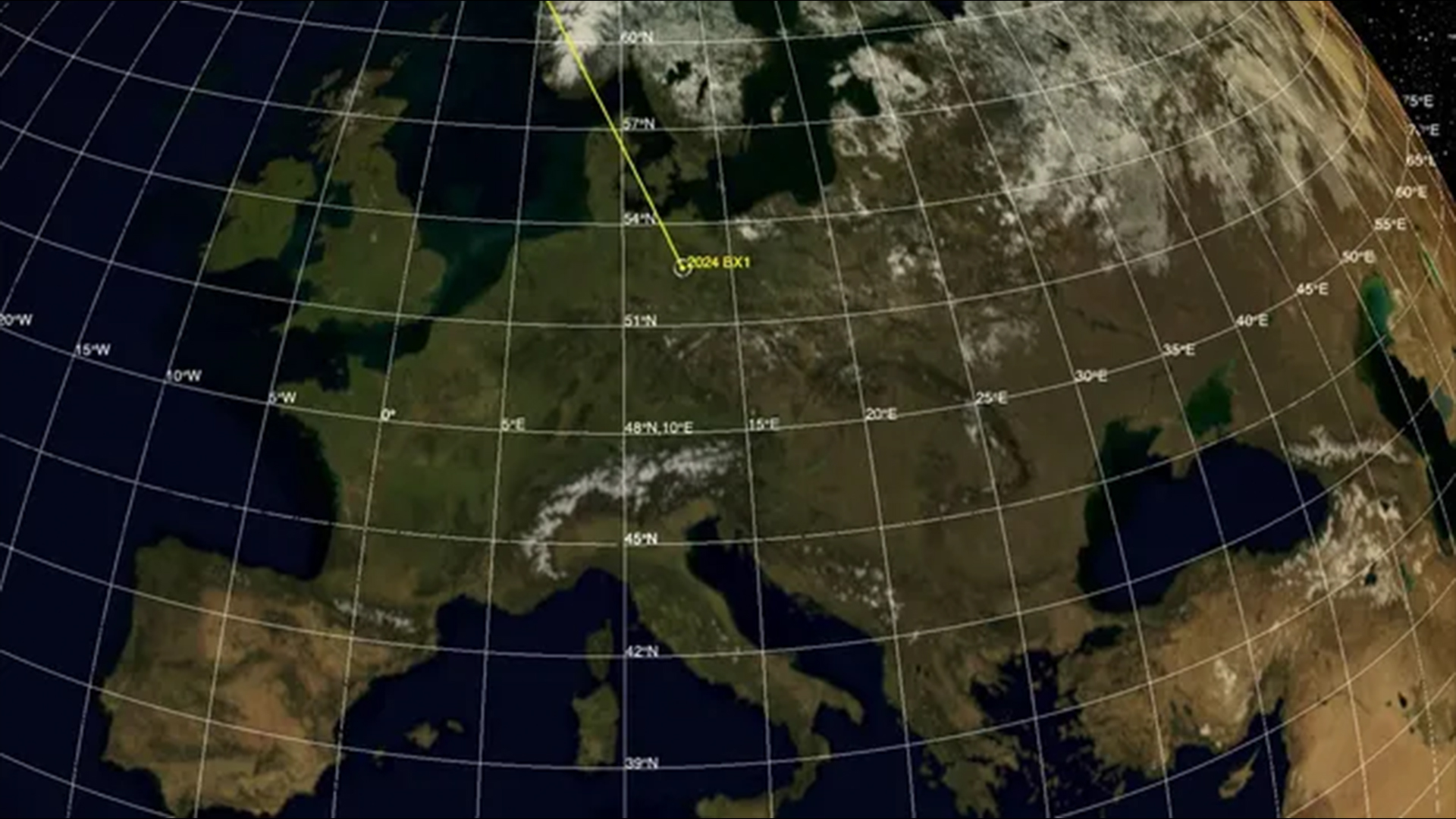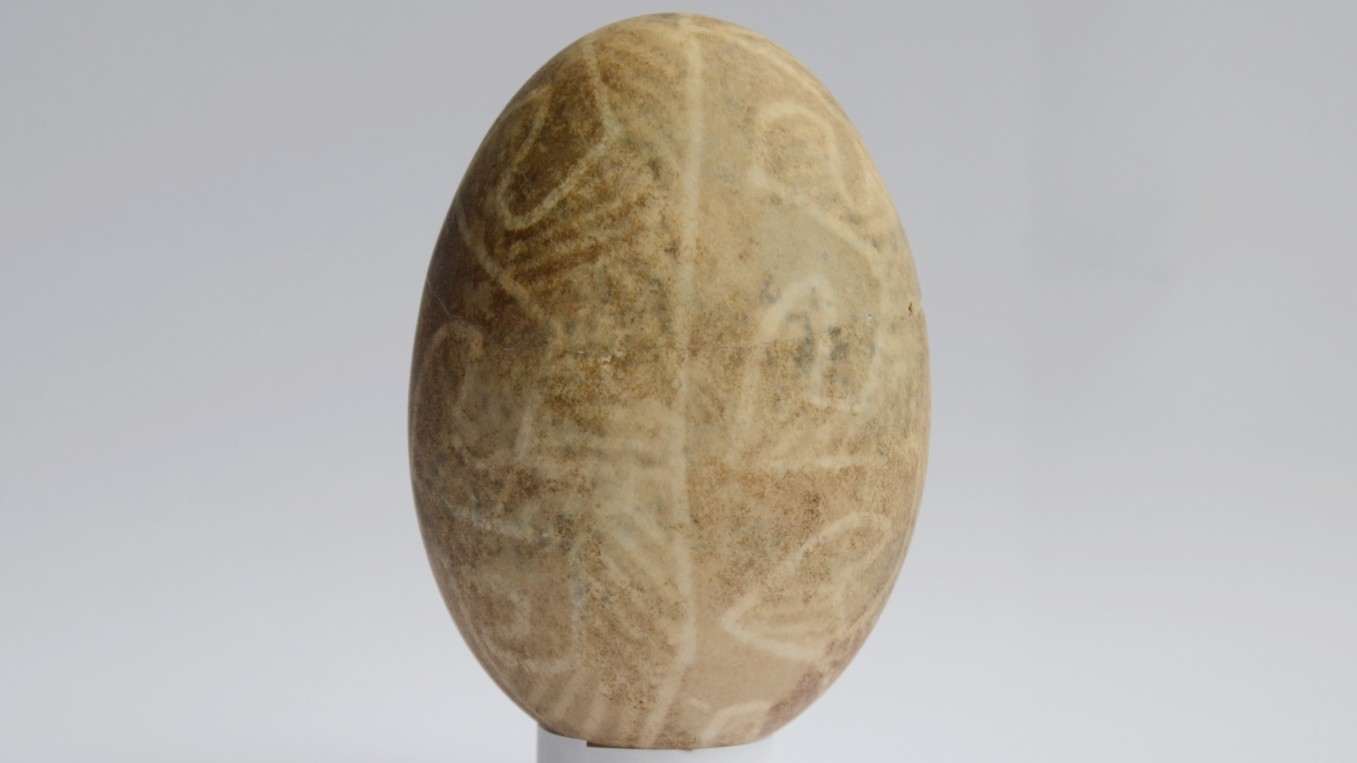How NASA correctly predicted that a tiny asteroid would burn up over Germany, hours before it happened

Scientists accurately predicted a tiny asteroid's impact over the weekend, showcasing a capability that will come in handy if a bigger, more dangerous space rock lines Earth up in its crosshairs.
Early Sunday morning (Jan. 21) German time, a roughly 3.3-foot-wide (1 meter) asteroid burned up in Earth's atmosphere near Berlin, generating a fireball seen by observers across Europe.
NASA knew it was coming and told folks to keep an eye out.
Related: Scientists discover near-Earth asteroid hours before it exploded over Berlin
"Heads Up: A tiny asteroid will disintegrate as a harmless fireball west of Berlin near Nennhausen shortly at 1:32am CET. Overseers will see it if it's clear!" NASA said via X at 7:08 p.m. EST on Saturday (Jan. 20), 24 minutes before the impact — which did in fact occur at the predicted time. (CET, or Central European Time, is six hours ahead of EST.)
Another *incredible* shot of the small asteroid burning up above Germany just moments ago—wow. pic.twitter.com/OGl0GuWGe6January 21, 2024
The impactor, designated 2024 BX1, had been discovered less than three hours earlier by Krisztián Sárneczky at the Piszkéstető Mountain Station of the Konkoly Observatory near Budapest, Hungary. 2024 BX1 was just the eighth asteroid to be detected before slamming into our planet, according to NASA officials.
The asteroid's path was successfully plotted by the Scout hazard-assessment system, which is run by the Center for Near Earth Object Studies (CNEOS) at NASA's Jet Propulsion Laboratory in Southern California.
Sign up for the Live Science daily newsletter now
Get the world’s most fascinating discoveries delivered straight to your inbox.
Scout nailed the impact, predicting an accurate collision time within one second and accurate location within 330 feet (100 meters), NASA officials said.
But Scout didn't do it alone. The program pulled data from the International Astronomical Union's Minor Planet Center (MPC), the clearinghouse for observations of asteroids and other small bodies in our solar system. Sárneczky had sent his 2024 BX1 data to the MPC, as did the other observers who began tracking the space rock after its initial detection.
"Seventy minutes after 2024 BX1 was first spotted, Scout reported a 100% probability of Earth impact and began to narrow down the location and time," NASA officials said in a statement. "As tracking continued and more data became available over the next hour, Scout improved estimates of the time and location."
That location was about 37 miles (60 kilometers) west of Berlin. There may be fresh meteorites on the ground in that area, agency officials said — tiny pieces of 2024 BX1 that survived its fiery trip through Earth's air.
Keeping tabs on potentially dangerous asteroids is one of NASA's key tasks. Congress has asked the agency to find and track at least 90% of all near-Earth space rocks that are at least 460 feet (140 meters) wide — big enough to cause serious problems if they hit our planet.
Such large asteroids are easier to spot than 2024 BX1, so we'd likely have considerably more notice of an impact than we got over the weekend. But the procedure would likely be similar, with Scout generating and refining impact predictions based on ever-expanding observations.
And then, of course, we'd have to decide what to do about the threat from above.
Originally posted on Space.com.












